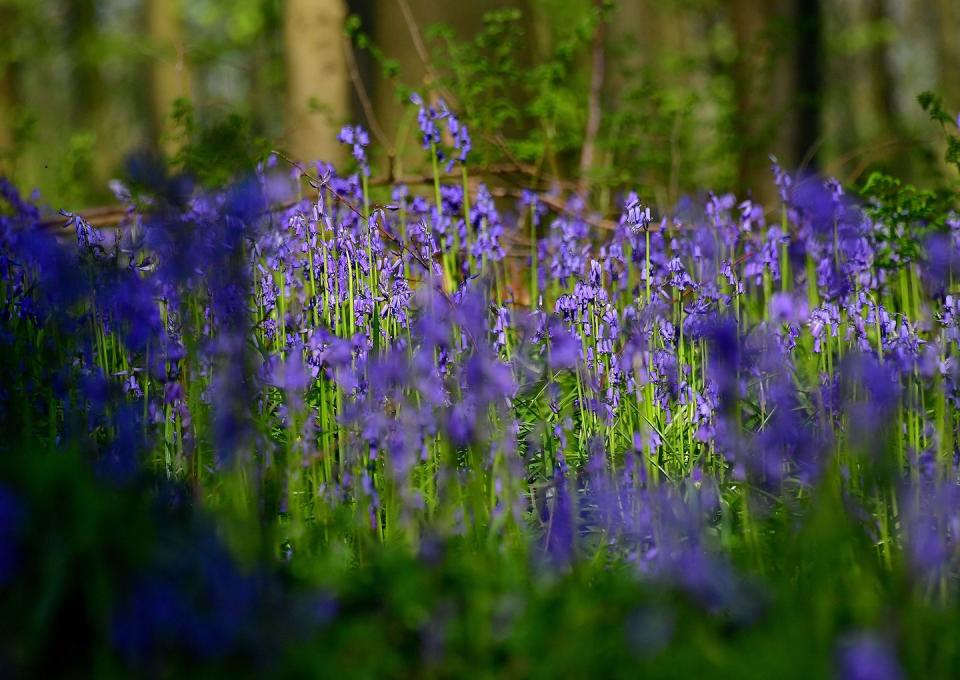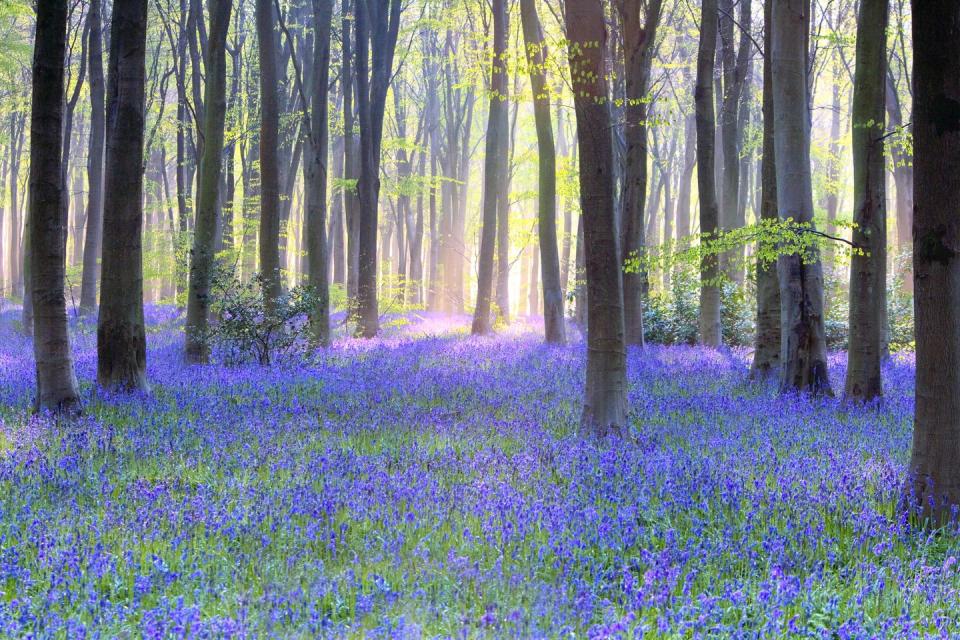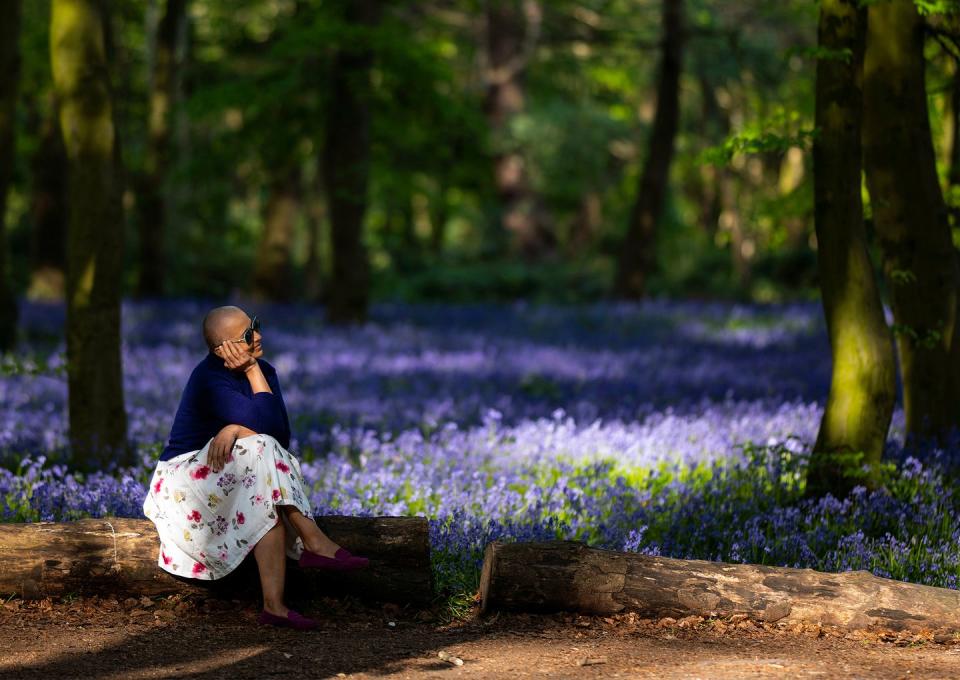5 top tips for planting bluebells from an RHS gardening expert
Bluebells conjure up scenes of wild meadows and fairy-tale inspired woodlands, with blankets of lilac-blue petals.
In our video, National Trust Ranger Leo Jennings takes us on a tour of the bluebells at Basildon Park.
At the end of this article, we have also included a list of more spaces across the UK you can see bluebells in bloom and the tools you can use to find help you find the closest location to where you live.
But bluebells don't have to be just for the wild, they can be planted at home as seeds or bulbs and are ideal for throwing into a cottage garden display, where bright, contrasting flowers are planted in a non-manicured style.
If you'd like to incorporate these stunning flowers into your own garden, we've spoken to an expert gardener who explains how to plant bluebells correctly, when the best time to plant them is and more.
Tips for planting bluebells

Jonathan Webster is the Curator at RHS Garden Rosemoor. Below, he shares his best advice and top tips for planting bluebells.
When to plant bluebells
They can be bought in several ways. One is in the green, which means they are lifted in February to March and sent to you in full leaf. On receipt you need to plant them as soon as they arrive.
The other is to receive them as bulbs later in the year, September to October. For me this is easiest, especially when dealing with large quantities. They are also available as seeds.
Where to buy bluebells
When buying your bulbs make sure they are from a reputable supplier. This means they will not have been taken from the wild and will not be the Spanish bluebell which hybridise with our native, becoming the dominant strain.
Where to plant bluebells
Well, these are tough plants and will cope with conditions that other plants would not. They thrive best in a woodland situation with semi-shade to full shade, a well-drained soil rich with organic matter.
At RHS Rosemoor, we have planted 30,000 bluebells under established beech woodland - you see this partnership quite often in nature, the bulbs flower and do their stuff before the dense shade of the beech leaves cover them.
How to plant bluebells
As with all bulbs, you are trying to naturalise. Planting them in an erratic way helps to make them look natural so the scatter technique works well - gently scatter them over the desired area and plant them where they land. A minimum depth of 10cm (4 in) is required and a couple of holes won’t hurt.
How long do bluebells take to flower?
Some plants take a while to settle in and find their feet. Bluebells may take a couple of years to flower - you may only get leaves in the first year, but their display is a long term project which will only get better.
Once they do start flowering, apart from the bulbs bulking up and dividing, the flowers will set seed which will also add to the future flower power.
Bluebell woods near me: 10 bluebell fields to visit

If you love the flowers but don’t have the time or space to plant your own, there are plenty of bluebell woods to visit across the UK.
We’ve rounded up a selection of bluebell fields to visit in Spring below. You can also find more bluebell woods near you using the both the National Trust and Woodland Trust websites.
1.Hackfall, Grewelthorpe, Yorkshire
This woodland in the Yorkshire Dales has a range of Spring flowers including bluebells in bloom. The grounds are accessible to the public and you can also see the gorge of the River Ure.
2. Ashridge Estate, Berkhamsted, Hertfordshire
Ashridge Estate consists of 5000 acres and is suitable for walking, cycling and horse riding. You can see meadows of bluebells as well as chalk downlands and deer.
3. Dunollie Wood, Oban, Scotland
The Scottish rainforest features woodlands of bluebells as well as views across Oban Bay. You can also follow the paths towards Dunollie Castle while visiting.
4. Costells Wood, Scaynes Hill, Sussex
The Woodland Trust’s Costells Wood in Sussex is another location you could take a trip to and spot some beautiful bluebells. You may also come across orchids and broadleaf trees.

5. Basildon Park, Berkshire
Basildon Park, as our video above demonstrates, is an ancient woodland and is an ideal place to see bluebells in bloom. You can book ahead for your visit on the National Trust website.
6. Wentwood, Llanvair Discoed, Wales
These Welsh woodlands are a great place to see views over the Severn Estuary as well as the bluebells in Spring. In Autumn you can find multicoloured and spotted fungi displays too.
7. Glen Finglas, Brig o’Turk, Scotland
Glen Finglas is the largest site looked after by the Woodland Trust. It includes mountains, glens, rivers and even Luing cattle, as well as bluebells in Spring.
8. Burroughs Wood, Ratby, Leicestershire
See bluebells in Burroughs Wood, which is spread across 90 acres and encompasses both new and ancient woodlands.
9. Prehen Wood, Northern Ireland
This ancient woodland is an ideal place to see bluebells in Spring and is a busy wildlife habitat for red squirrels, foxes and more. There are also wooden sculptures by Micheal Rodgers around the grounds.
10. Plas Power Woods, Bersham, Wales
These woodlands are a great place to see bluebells as well as look for kingfishers in the river and explore the on site maze.
You Might Also Like


